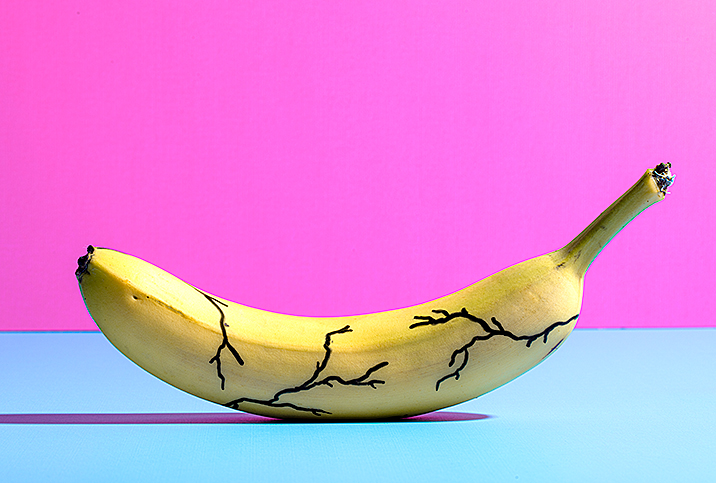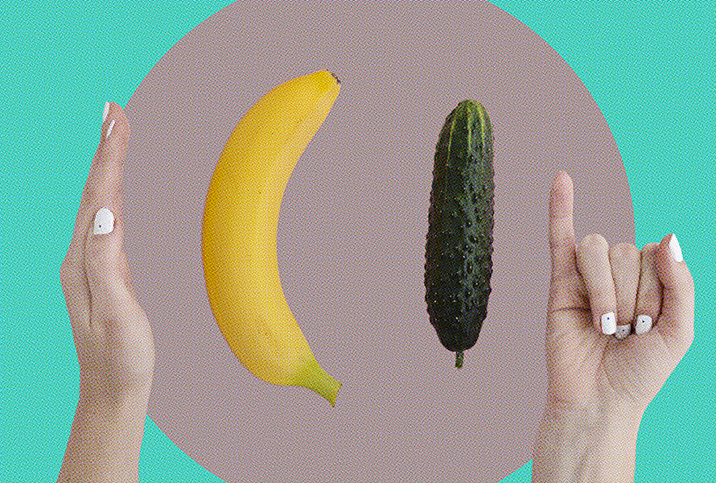Why Is My Penis That Color?

You might not notice it, but penises, colliliqually called dicks, change color pretty significantly throughout your lifetime. Not only does that part of your body tend to be darker than the rest of your body, but there's also a whole host of factors that influence the exact color of your penis and balls. From boners and puberty to bruising and STIs, there are plenty of good reasons your penis might look slightly different than usual––and most of them, thankfully, are pretty harmless.
According to Paul Turek, M.D., an experienced urologist and founder of the Turek Clinic, there's still plenty of research to be done when it comes to penis coloration.
Why do penises vary in color?
The first thing to know is, "The closest skin in the body to penile skin is eyelid skin," Turek explained. "It's similarly devoid of fat, and it is very thin and distensible."
Because the skin covering the shaft of the penis is so lightweight, boners tend to turn dicks a dark, kind of reddish-purple color. This is nothing to worry about, as the temporary color change is caused by blood rushing to the penis, pumping up the blood vessels and causing a hard-on.
There are other, more serious color changes to worry about, though.
"Dark blue or black skin represents a serious issue in any part of the body, the penis included," Turek continued. "My advice would be that if a coloration issue lasts more than two or three days, consider having it examined by a professional."
A rapid, significant darkening of your penis could mean blood flow has been cut off, in which case you'll need to go to the hospital immediately.
Like the skin everywhere else on our bodies, penile skin is not guaranteed to be totally even or free of discoloration.
Because sex hormones regulate melanocyte cells, which release melanin and are therefore responsible for pigmentation, it's totally natural for your dick and balls to get significantly darker throughout puberty, too. Hormone levels tend to sharply fluctuate during these pivotal years, hence the relatively quick and drastic shift in hue.
Like the skin everywhere else on your body, penis skin is not guaranteed to be totally even or free of discoloration, either. Turek offered reassurance that it's "natural and common" for some unevenness in skin tone or hyperpigmentation, and penile melanosis––characterized by small, dark patches either on the shaft or glans—is often benign and harmless.
According to 2018 research on diabetes-related skin conditions, necrobiosis lipoidica (NL)––a rare condition first associated with insulin-dependent diabetics––can result in blotches of reddish-brown or yellowish-brown discoloration, very occasionally on the head of the penis. Even then, researchers added reassurance that "despite the pronounced appearance of the lesions, NL is often asymptomatic."
For the most part, Turek reiterated, "blisters, sores and other spots can be normal, like on other areas of the body." If they appear out of nowhere, or they're painful and inflamed, blisters, sores and spots can "represent abnormalities of the skin due to local trauma or wear and tear," or they can be symptomatic of ulceration––according to the aforementioned research, about one in three cases of NL results in ulcers.
When should you be concerned about the color of your penis?
It's not just the skin that can change color, either. If the tip of the cock looks particularly red, inflamed or angry, it can be a symptom of balanitis. According to Turek, the condition "typically stems from irritation due to excessive moisture, fungus or bacteria," and "may not resolve itself, so seeing a urologist or dermatologist would be a good idea if it persists."
There's also lichen sclerosus, a skin condition that can cause patches of white to form on the genitals. And while there's no known cure, it can be managed through the use of a prescription steroid cream.
Most causes of discoloration are either harmless or a sign of bruising, caused by ruptured blood vessels underneath the skin, which leak and change the color to a purple, red or dark blue hue. Generally speaking, if you've got a bruised dick, there's a good chance you'll know about it––this kind of color change is rarely painless and can stem from issues like minor pinching, overenthusiastic fucking, masturbation and getting your dick caught in your zipper.
When considering whether or not to worry about the color of your junk, there are two main questions you should be asking yourself: Is this new? Is this painful?
If the answer to either of these queries is yes, go see a urologist.


















